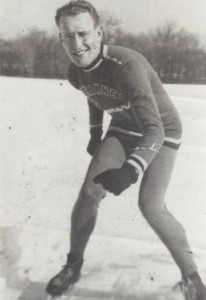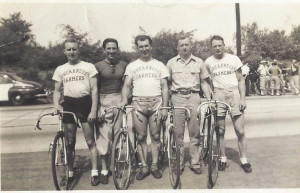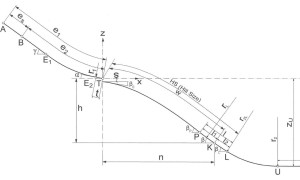Olympic History: Figure skating began in the mid- to late-19th century in Europe, but two Americans are responsible for major developments in its history. In 1850, Edward Bushnell of Philadelphia revolutionized skating technology when he introduced steel-bladed skates. This allowed the creation of fancy twists and turns on the ice. Another American, Jackson Haines, a ballet master, lived in Vienna in the 1860’s and added the elements of ballet and dance to figure skating.
Figure skating competitions were held in the 1880s and the International Skating Union was formed in 1892, the first true international governing body of any sport. Originally men and women competed together, with the first world championship being held in what was then and is now St. Petersburg, Russia (formerly Leningrad) in 1896. The first women’s championship was held in 1906. Originally free skating was completely subordinate to the school figures, which entailed tracing pretty figures on the ice.
Figure skating is the oldest sport on the Winter program. It was contested at the London Olympics of 1908 and again in 1920 at Antwerp. Events for men, women, and pairs were contested through 1972, when in 1976, ice dancing, long a popular event, was added to the program as a fourth event. It had been a demonstration event in 1968 at Grenoble.
Scoring has evolved during the century also, as the former predominance of school figures in the scoring gave way in the early 1970s. In 1972, Janet Lynn of the United States finished third in the Olympics despite being the best free skater by a significant margin (some experts consider her the greatest free skater ever, relative to her era). This gave impetus to the movement to decrease the importance of school, or compulsory, figures. In the mid-1980s the ISU ruled that school figures would no longer be held at international competitions. They last were contested at the 1990 World Championships and were not a part of the figure skating Olympic program beginning in Albertville.
At the 2002 Winter Olympics, a great controversy occurred in the pairs competition, in which the Canadian team of Jamie Salé and David Pelletier was originally placed second behind the Russian pair of Yelena Berezhnaya and Anton Sikharulidze. But it developed that the French judge had colluded to score the Russians higher in exchange for her French dance team being scored higher in that event. The ISU and IOC intervened and declared the two teams co-champions. But this led to a complete overhaul of the figure skating scoring system that was gradually put into place over the next four years. The scoring moved away from an ordinals system, with places determined by majority ordinal placement, to a point-scoring system in which skaters received points for difficulty and execution. Deductions were more mandatory and the entire system was very different. It was used in 2006 for the first time at the Winter Olympics, but has remained very difficult for the public to understand, much more so than the old perfect 6.0 score system, and because of the emphasis on scoring points, some critics say it has turned all events into jumping competitions.
Figure skating is governed internationally by the International Skating Union (ISU), which was founded in July 1892, making it the oldest winter sport IF. The ISU governs all skating on the Olympic Program – figure skating, speed skating, and short-track speed skating. As of November 2013, the ISU lists itself as having 87 affiliated national federations, but this is only technically correct. There are actually only 68 nations affiliated with the ISU, as follows: Andorra, Argentina, Armenia, Australia, Austria, Azerbaijan, Belarus, Belgium, Bosnia & Herzegovina, Brazil, Bulgaria, Canada, China, Chinese Taipei, Croatia, Cyprus, Czech Republic, Denmark, DPR Korea (North), Estonia, Finland, France, Georgia, Germany, Great Britain, Greece, Grenada, Hong Kong, Hungary, Iceland, India, Indonesia, Ireland, Israel, Italy, Japan, Kazakhstan, Korea, Latvia, Lithuania, Luxembourg, Malaysia, Mexico, Monaco, Mongolia, Morocco, Netherlands, New Zealand, Norway, Philippines, Poland, Puerto Rico, Romania, Russia, Serbia, Singapore, Slovakia, Slovenia, South Africa, Spain, Sweden, Switzerland, Thailand, Turkey, Ukraine, United Arab Emirates, United States, and Uzbekistan.
Seventeen nations have two federations – one for figure skating, and one for speed skating. These seventeen nations are: Argentina, Australia, Austria, Belgium, Canada, Czech Republic, Finland, Germany, Lithuania, New Zealand, Poland, Russia, Slovakia, South Africa, Sweden, Ukraine, and the United States. This would make 85 affiliated federations, but the ISU also recognizes two “Club” members, who were among the earliest members of the ISU. These “Club” members represent Stockholm, Sweden (Stockholms Allmänna Skridskoklubb) (1892) and Davos, Switzerland (Internationaler Schlittsschuh-Club Davos) (1896).


